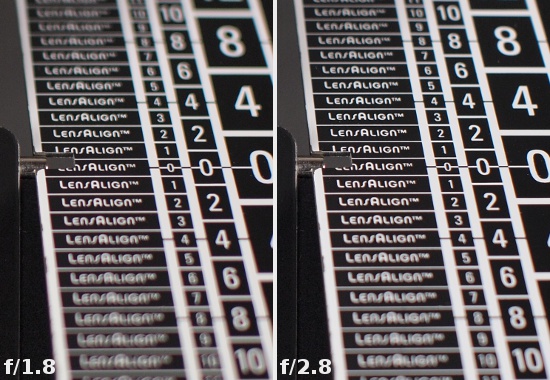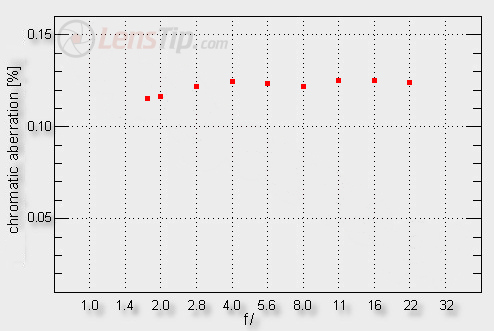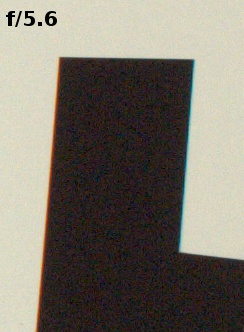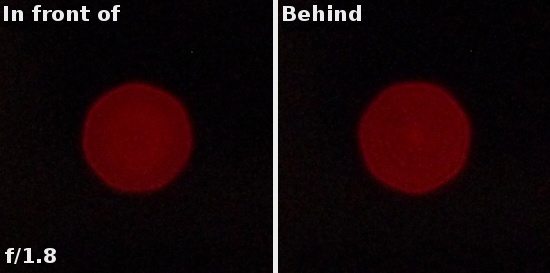Olympus M.Zuiko Digital 17 mm f/1.8
5. Chromatic and spherical aberration
Chromatic aberration
The longitudinal chromatic aberration is corrected well – off focus images near the maximum relative aperture are just slightly coloured and that effect shouldn’t be bothersome in real life photos.
 |
Please Support UsIf you enjoy our reviews and articles, and you want us to continue our work please, support our website by donating through PayPal. The funds are going to be used for paying our editorial team, renting servers, and equipping our testing studio; only that way we will be able to continue providing you interesting content for free. |
- - - - - - - - - - - - - - - - - - - - - - - - - - - - - - - - - - - - - - - - - - - - - - - -
Lateral chromatic aberration might prove to be more troublesome. That aberration seems to be independent of the value of the aperture and its level is situated near 0.12% across the whole aperture range. It is a level we consider medium.

 |
Spherical aberration
Spherical aberration can be described in similar terms as the chromatic aberration. It is not corrected in a perfect way because there are differences between images of a defocused diode we got in front of and behind the focus; still that effect is not high so there are no serious reasons to complain.







